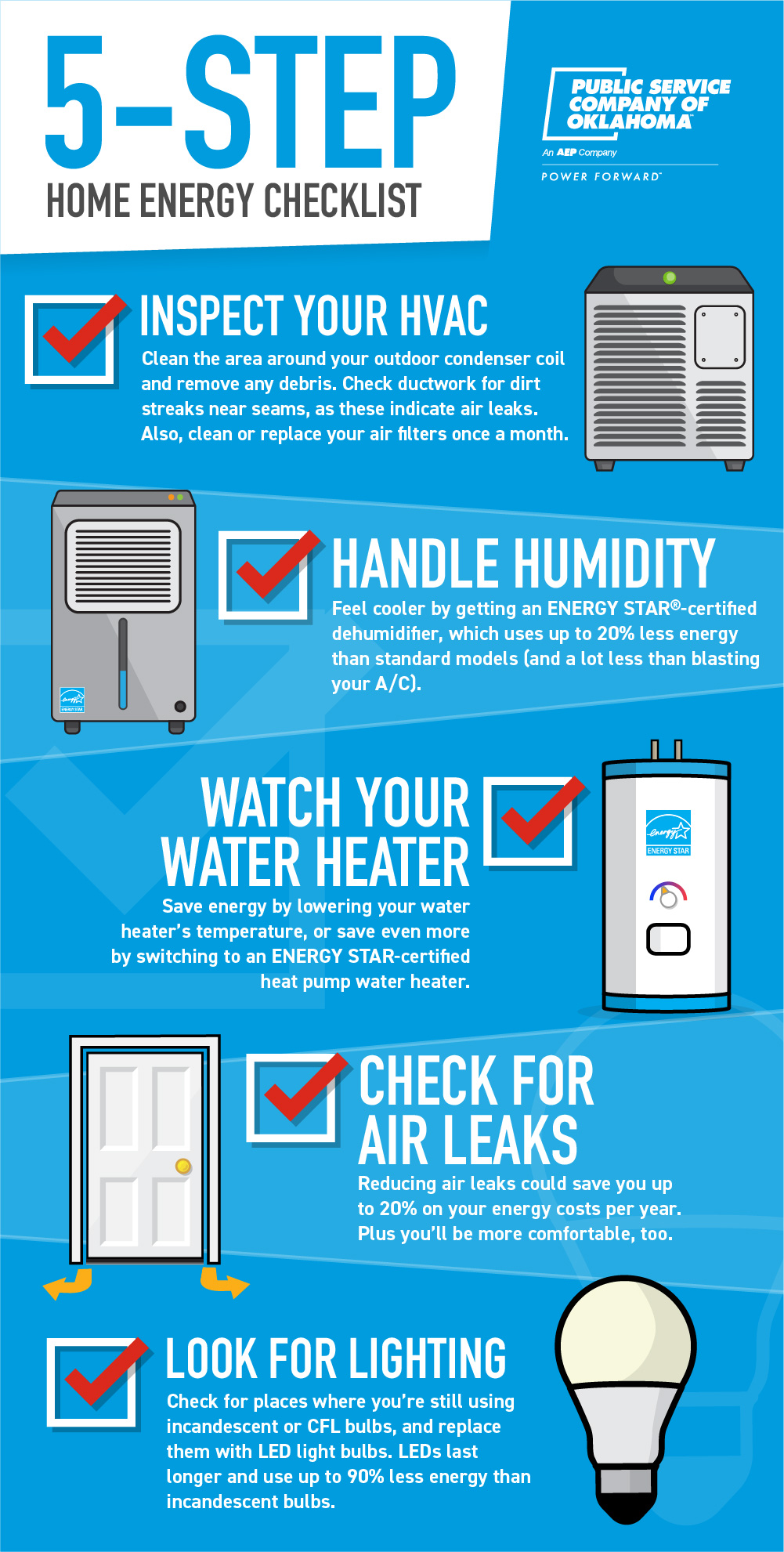Making your home more energy-efficient can be intimidating, whether you’re a seasoned saver or a new one. You don’t need to be an energy expert to save like one. Our home energy checklist makes it easy to see ways you can save around the house.
While there are plenty of ways to save energy, we focus on four of your household’s biggest energy consumers, so you can make the most of your time.
1. Inspect your HVAC.
Your HVAC is your home’s biggest energy user, so starting here makes a lot of sense (and can save lots of cents too). Check ductwork for dirt streaks near seams, as these indicate air leaks. Also, clean or replace your air filters once a month. If it’s time for a new unit, consider upgrading to an Energy Star®-certified model, and you could save up to $800 with PSO rebates.
2. Handle humidity.
Y’know how they say “it’s not the heat that gets you, it’s the humidity?” We Oklahomans can certainly relate! So get an Energy Star-certified dehumidifier, which uses up to 20% less energy than standard models (and a lot less than blasting your A/C). Just be sure to choose the right size for your room.
3. Watch your water heater.
Most water heaters heat up your home’s water whether you’re using it or not. No wonder they are most homes’ second biggest energy users! So to save energy, and avoid burning your hands, use a warm setting for your water heater (about 120 degrees Fahrenheit). Even better? Switch to an Energy Star-certified heat-pump water heater, which uses way less energy and comes with a $500 rebate from us. Not ready to upgrade to a HPWH (or is your home not a good candidate)? Insulating your water heater works wonders, too.
4. Check for air leaks.
Reducing air leaks could save you up to 20% on your energy costs per year. Plus you’ll be more comfortable, too. Look for obvious (and not so obvious) leaks, like gaps in the baseboard or at junctures of the wall and ceiling. Check your fireplace’s surround, and close the flue. Check outside, especially where two different building materials meet. Look for sneaky leaks too, including windows, doors, light fixtures, outlets, and plumbing fixtures. Once you’ve spotted the leaks, seal them (Note: Interior or exterior leaks take different products to seal, so make sure you’ve got the right sealant.) Check for available rebates from us.
5. Look for lighting.
Lighting accounts for up to 10% of your energy use, so checking here is a bright idea. Check around the house for places where you’re still using incandescent or CFL bulbs, and replace them with LED light bulbs instead. LEDs last longer and use up to 90% less energy than incandescent bulbs. We’ll help you save up to $2/bulb, too, so your savings can really stack up. P.S. The gaps around can lighting are also a source of air leaks, which can cost you even more energy. Replace your can lighting with newer fixtures that don’t have gaps around the bulbs (and be sure to use LED, too).
Check for these five biggies and you’ll be done in no time. Plus, you’ll be well on your way to saving way more energy all year long. Who says saving can’t be easy?

